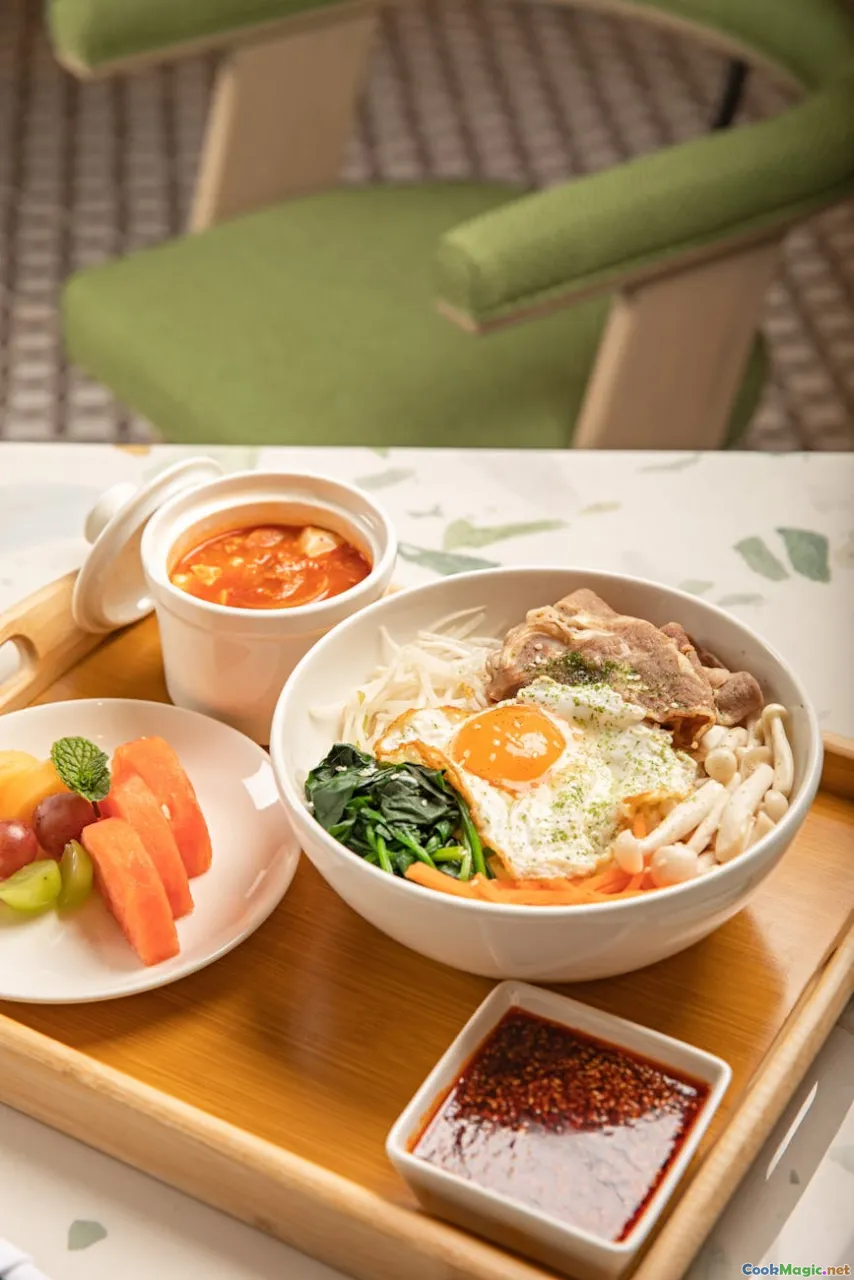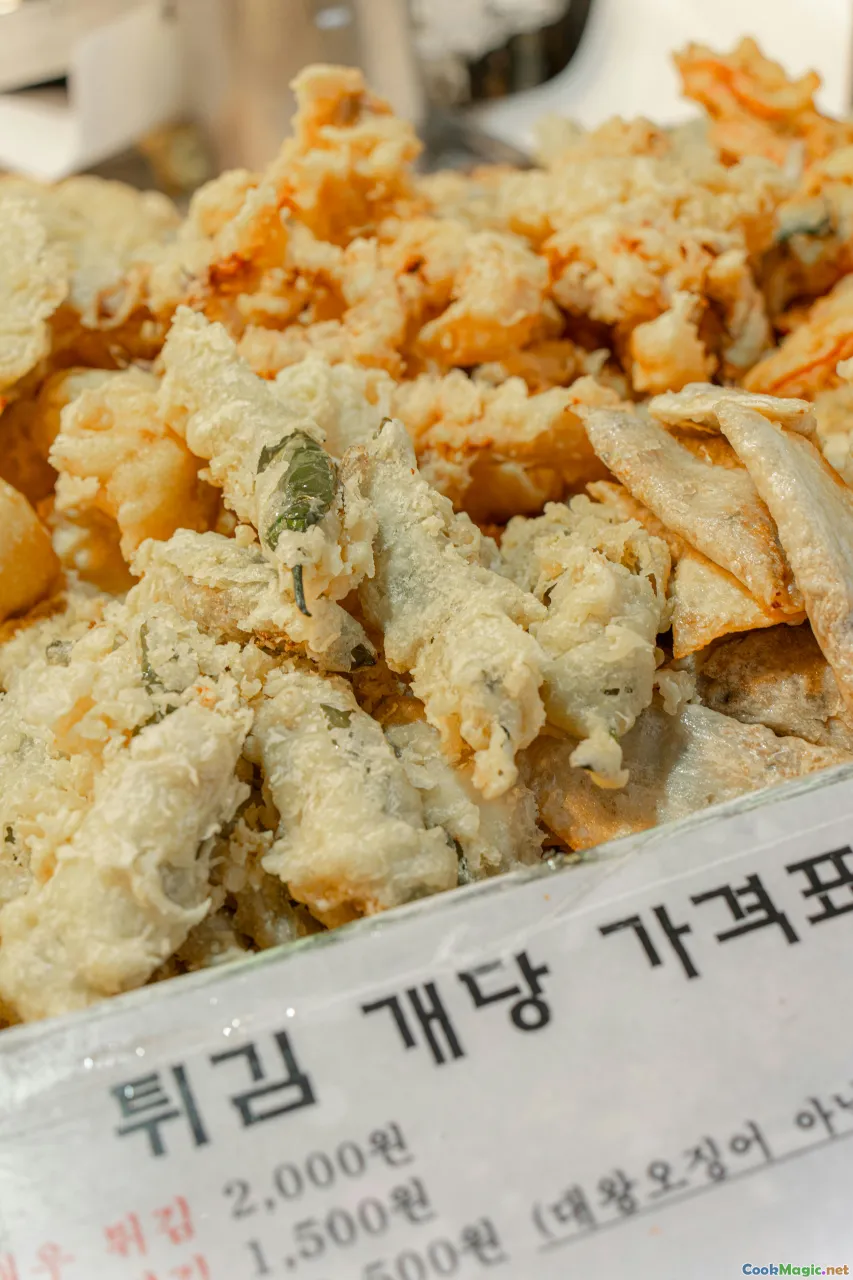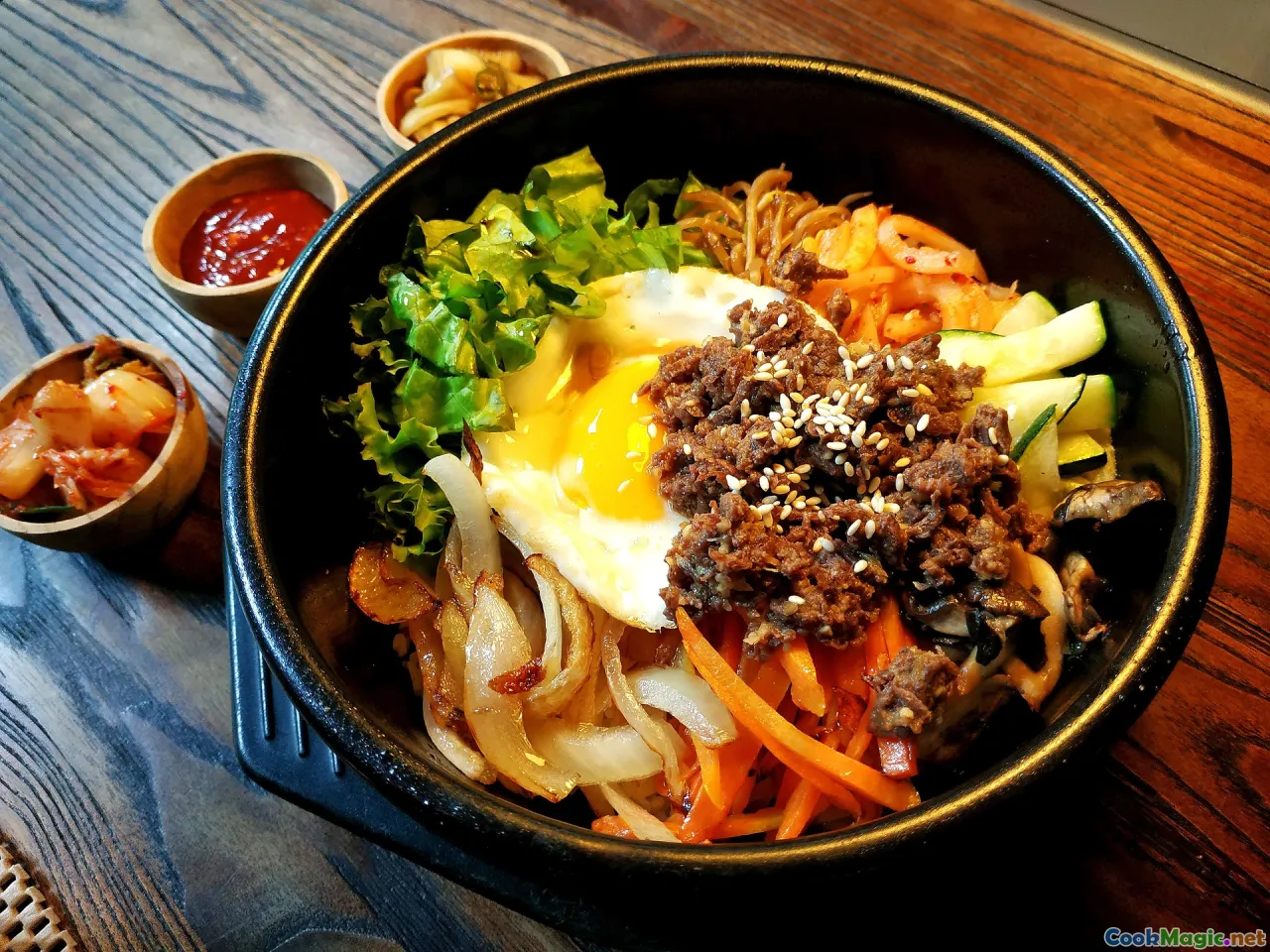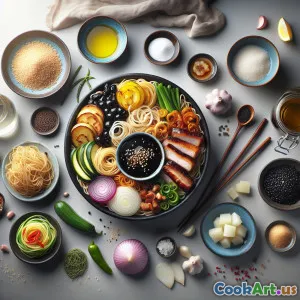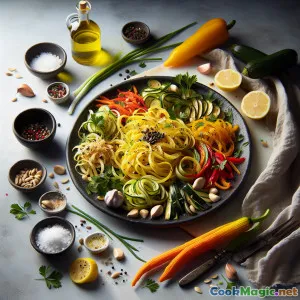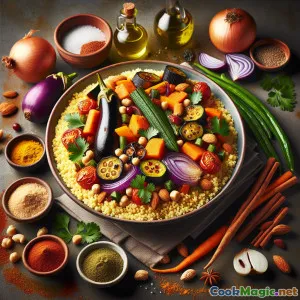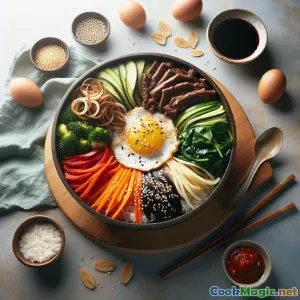
Délicieux Bibimbap Coréen : Un Bol de Riz Coloré
(Delicious Korean Bibimbap: A Colorful Rice Bowl)
(0 Avis)0
496
juin 29, 2025
Signaler un problème
Ingrédients
-
2 cups Riz Cuit
(Utilisez du riz à grain court pour l'authenticité)
-
150 grams Boeuf
(Tranché finement, peut utiliser du bœuf bulgogi)
-
1 medium Carotte
(Julienne)
-
1 medium Courgette
(Julienne)
-
1 cup Épinard
(Blanchie)
-
2 large Œuf
(Œuf au plat au soleil)
-
2 tbsp Gochujang
(Pâte de chili rouge coréen)
-
1 tbsp Huile de sésame
(Pour le goût)
-
1 tbsp Sauce soja
(Pour faire mariner du bœuf)
-
1 tbsp Graines de sésame
(Pour garnir)
(Utilisez du riz à grain court pour l'authenticité)
(Tranché finement, peut utiliser du bœuf bulgogi)
(Julienne)
(Julienne)
(Blanchie)
(Œuf au plat au soleil)
(Pâte de chili rouge coréen)
(Pour le goût)
(Pour faire mariner du bœuf)
(Pour garnir)
Nutrition
- Portions: 2
- Taille de portion: 1 bol (350g)
- Calories: 700 kcal
- Carbohydrates: 80 g
- Protein: 30 g
- Fat: 25 g
- Fiber: 6 g
- Sugar: 5 g
- Sodium: 600 mg
- Cholesterol: 200 mg
- Calcium: 150 mg
- Iron: 3 mg
Instructions
-
1 - Préparer les ingrédients:
Lavez et émincez en julienne la carotte et la courgette. Blanchissez les épinards dans de l'eau bouillante.
-
2 - Cuire le Bœuf:
Faites mariner le bœuf dans de la sauce soja et de l'huile de sésame pendant 10 minutes, puis faites sauter jusqu'à ce qu'il soit cuit.
-
3 - Faire sauter les légumes:
Dans une poêle, faites revenir séparément les carottes et les courgettes jusqu'à ce qu'elles soient tendres.
-
4 - Faire Frire les Œufs:
Dans une poêle séparée, faites frire les œufs au soleil.
-
5 - Assembler Bibimbap:
Dans chaque bol, placez une portion de riz, garnissez de bœuf, légumes et un œuf frit. Arroser de gochujang et d'huile de sésame.
-
6 - Servir:
Garnir de graines de sésame et servir chaud, en mélangeant tous les ingrédients avant de manger.
Lavez et émincez en julienne la carotte et la courgette. Blanchissez les épinards dans de l'eau bouillante.
Faites mariner le bœuf dans de la sauce soja et de l'huile de sésame pendant 10 minutes, puis faites sauter jusqu'à ce qu'il soit cuit.
Dans une poêle, faites revenir séparément les carottes et les courgettes jusqu'à ce qu'elles soient tendres.
Dans une poêle séparée, faites frire les œufs au soleil.
Dans chaque bol, placez une portion de riz, garnissez de bœuf, légumes et un œuf frit. Arroser de gochujang et d'huile de sésame.
Garnir de graines de sésame et servir chaud, en mélangeant tous les ingrédients avant de manger.
En savoir plus sur: Délicieux Bibimbap Coréen : Un Bol de Riz Coloré
Bibimbap, un plat traditionnel coréen, n'est pas seulement un repas ; c'est une forme d'art. Le nom lui-même se traduit par 'riz mélangé', et c'est exactement ce que c'est : un bol coloré de riz surmonté d'une variété de légumes sautés et assaisonnés, de bœuf, et d'un œuf frit, le tout mélangé avec une cuillerée de sauce gochujang épicée. Historiquement, le bibimbap était une façon d'utiliser les restes d'ingrédients, ce qui en faisait un plat pratique pour les familles. Chaque ingrédient dans le bibimbap a sa propre saveur et valeur nutritionnelle, ce qui en fait un repas équilibré. Les couleurs vives des légumes représentent l'harmonie du yin et du yang dans la culture coréenne, symbolisant l'équilibre et la santé. Pour une option végétarienne, il suffit de omettre le bœuf et d'ajouter plus de légumes ou du tofu. Ce plat est parfait pour partager et permet à chacun de personnaliser son bol selon ses goûts. Que ce soit à la maison ou au restaurant, le bibimbap est une expérience délicieuse qui rassemble les gens autour de la table.

